Hummingbird mint, also known as Agastache, is a vibrant and fragrant plant that acts as a magnet for pollinators in your garden. Today, we will explore the wonders of hummingbird mint and provide you with essential tips on how to successfully cultivate it in your own pollinator garden.
What is Hummingbird Mint?

There are 22 different types of hummingbird mint to choose from.
©Alex Manders/Shutterstock.com
Hummingbird Mint (Agastache) is an aromatic perennial herb that belongs to the Lamiaceae family. Agastache does not rhyme with the word mustache, by the way. It is pronounced ah-gah-stah-kee. This plant is native to the southwestern United States and Mexico but is widely cultivated in other regions around the world. Other names for this plant are honey plant and giant hyssop.
Hummingbird mint grows spike-like inflorescences, which range in color from purple to blue. A few species have white or pink flowers. There are varieties available in orange and red. The plant also has a characteristic deep green foliage that is covered with fine hairs.
There are 22 different species of hummingbird mint, some of which grow to 9 feet tall. But the average height is between 2 and 4 feet tall. It blooms in the early summer and continues blooming until a hard frost in the fall.
This plant is perennial in USDA Hardiness zones 4 through 10. Agastache foeniculumwill survive temperatures down to 10°F in the winter. If you live in a colder climate, never fear. This plant readily self-sows. So, even if your winters are chilly, the seeds will likely sprout again next spring.
Why Do Hummingbirds Like Hummingbird Mint?
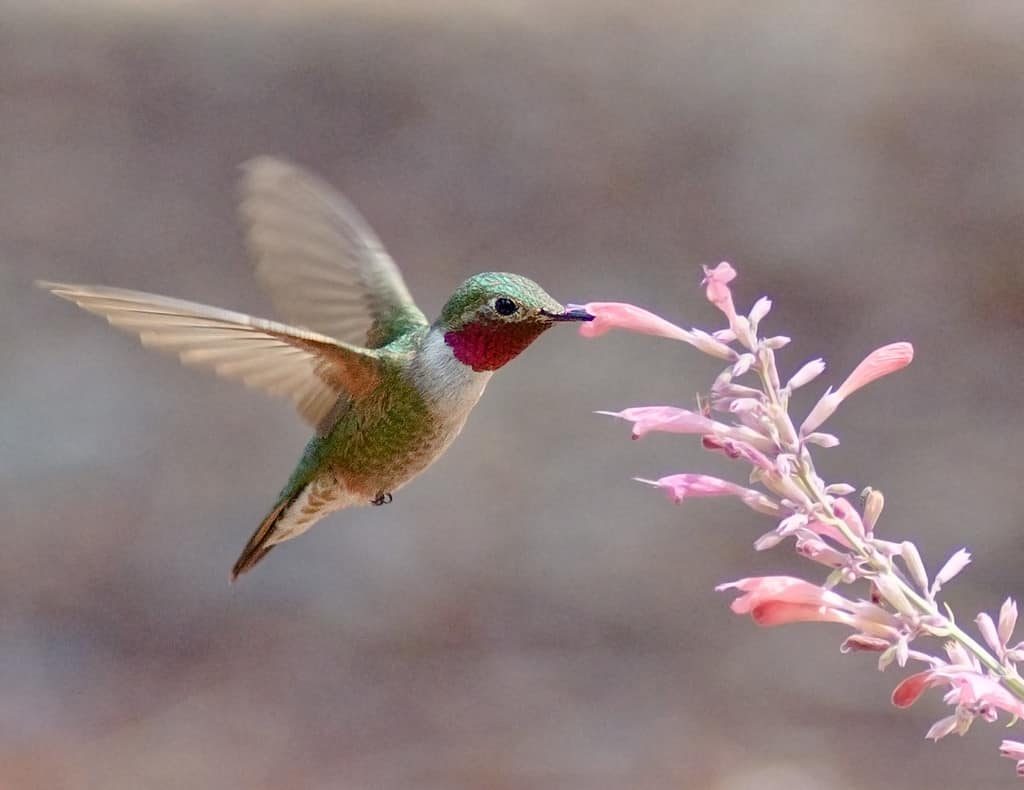
The nectar of hummingbird mint is a delightful treat for hummingbirds.
©M-C-C/iStock via Getty Images
Hummingbird mint is a plant that has become very popular among hummingbird enthusiasts due to its fragrant smell and attractive blooms. The plant’s unique features make it an ideal choice for attracting hummingbirds to your backyard. Hummingbird mint produces tiny, nectar-rich flowers that are extremely attractive to hummingbirds. The blooms are also a great source of food for the birds, and they are known to stay around for a long time enjoying the nectar.
Other Pollinators that Enjoy Hummingbird Mint
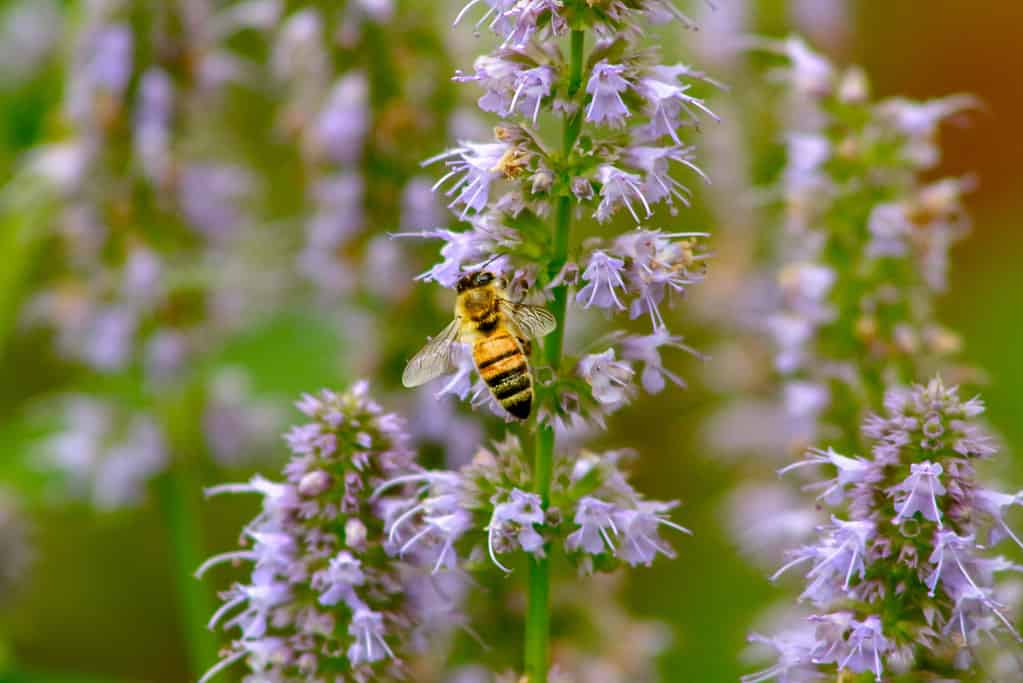
Agastache rugosa, or Korean hummingbird mint, is attractive to many pollinators.
©mynewturtle/iStock via Getty Images
Many beekeepers plant hummingbird mint near their bee hives because bees love the tubular flowers full of nectar. Fritillaries and skippers also enjoy these sweet treats. The United States Department of Agriculture has used Agastache to restore pollinator habitats. They observed 14 different species of Lepidoptera visiting the plants! Leafcutter bees, European honey bees, black and gold bumble bees, and halictid bees are all attracted to hummingbird mint. Goldfinches visit this plant in the fall and love to eat the seeds.
How to Grow Hummingbird Mint

Don’t worry, hummingbird mint is not as wildly spreading and invasive as regular mint.
©Danny Hummel/Shutterstock.com
Thankfully, hummingbird mint is very easy to grow. As long as you have a sunny position and free-draining soil, it will thrive.
Light
Plant hummingbird mint in full sun. it requires at least 6 hours of direct sunlight per day. If you live in a very hot climate, hummingbird mint will survive in partial afternoon shade but may not produce flowers.
Soil
Hummingbird mint needs very well-drained soil. If you have heavy, wet, or clay soil, amend it with lots of organic material before planting. If that sounds like too much work, you can plant your hummingbird mint in a raised bed or container full of light, well-aerated potting soil.
Planting
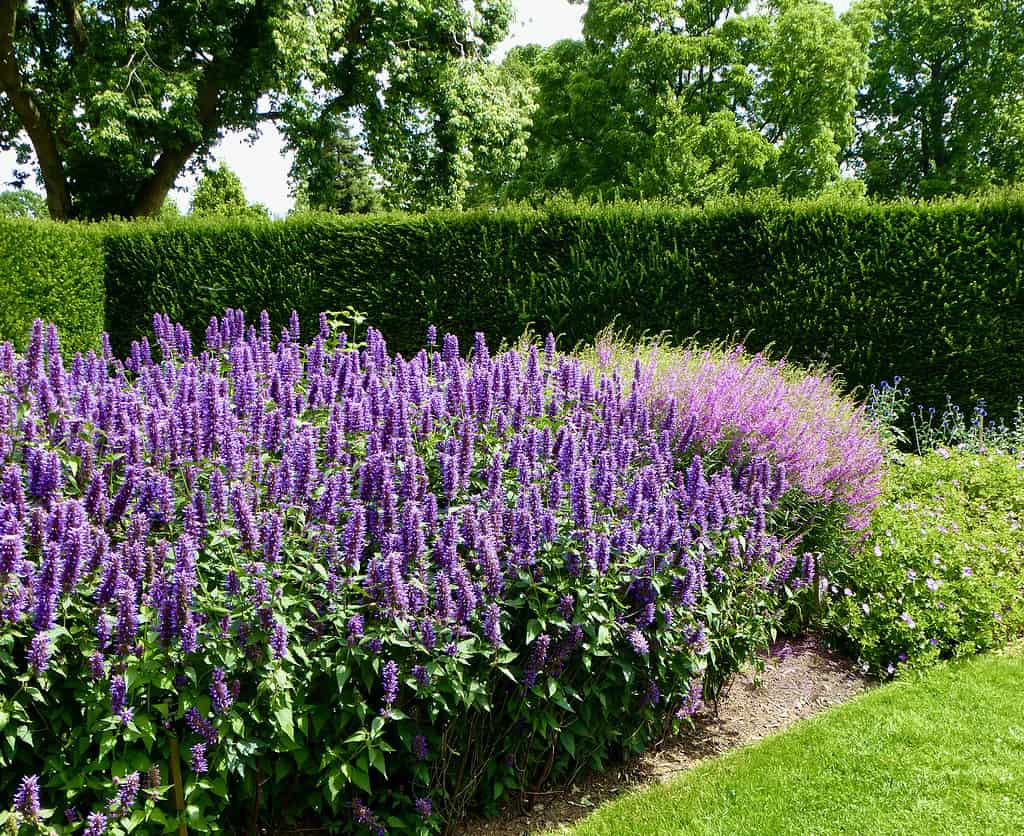
Hummingbird mint readily self-sows, so it can thicken into a beautiful flowering hedge in no time.
©Wirestock/iStock via Getty Images
You can direct sow Agastache seeds after all danger of frost has passed and the soil is 60°F or more. You can also sow the seeds in the fall, and the seeds will lay dormant until springtime.
Alternatively, you can start the seeds inside 6 weeks before the last spring frost date. When the plants reach four or five inches tall, start acclimating them to outdoor temperatures slowly. Plant hummingbird mint 12 inches apart.
Staking
Hummingbird mint almost never needs a stake. The stems are strong and sturdy. But, if your garden is in a very windy area with little protection, consider planting Agastache close together so it can hold itself up in a group. You can also use thin garden stakes to support it.
Watering
This plant is drought-tolerant once established. It is harmed by overwatering, so in addition to very well-draining soil, you want to avoid watering too often. In the very hottest parts of summer, you will likely only need to water every couple of weeks.
Fertilizing

A generous serving of compost is likely all the fertilizer your hummingbird mint will need.
©Singkham/Shutterstock.com
Before planting Agastache, incorporate compost into the soil. Generally, extra fertilizer is not necessary as it can interfere with the production of essential oils in the leaves and flowers, as well as cause the stems to become weak and droop.
Mulching
Hummingbird mint can withstand arid conditions and usually does not require mulch. But if the surrounding environment is particularly dry, adding a layer of crushed stone or pine needles over the soil can help young plants take root and prevent weed growth.
Pruning
To promote bushier growth, pinch the new stems of hummingbird mint in the spring. Also, cut off dead flower stalks to maintain a well-kept look. In Zones 4 to 10, reduce the size of the plant by one-third at the start of each season. If it’s an annual, keep up with regular pruning and deadheading. To prevent it from producing excessive amounts of seeds, remove the flower stalks before they turn brown. You can also place a brown bag over the seedheads and give free seeds away to your gardening friends.
Dividing
Because hummingbird mint dies back to the ground in the winter, you will not have to divide it very often. But, every 5 years or so, split the plant into 12-inch sections and plant them all in separate locations. It is best if you do this in the early spring before the plant wakes up and starts to grow.
22 Types of Hummingbird Mint (Agastache)

If you want to help support pollinators, consider planting hummingbird mint.
©chris-mueller/iStock via Getty Images
Agastache is split into two sections: Agastache and Brittonastrum. The former is found in western and central North America, plus East Asia. It has a small upper petal lip, which causes the stamina stalks to stick out widely, with two of them curved and crossing the other pair.
Meanwhile, section Brittonastrum is discovered in southwestern North America, with the most variety in northern Mexico. This species has a more developed upper lip on its petals, and the stamina runs parallel without crossing.
The Giant Hyssops (section Agastache)
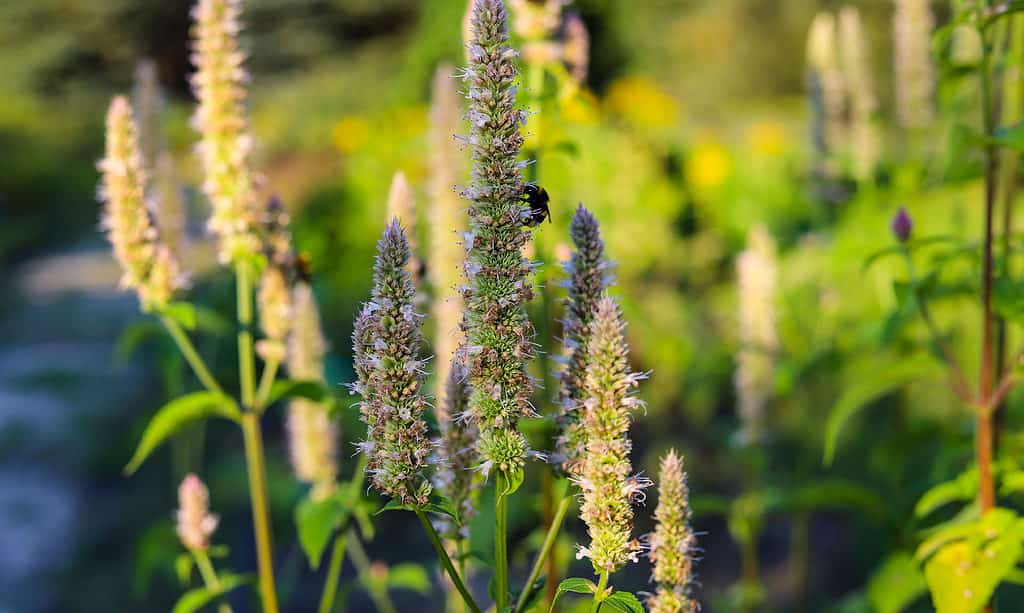
Yellow giant hyssop grows in eastern regions of the United States and Canada.
©Kabar/Shutterstock.com
- Nettle Leaf Giant Hyssop—Agastache urticifolia. Grows in western North America.
- Purple Giant Hyssop—Agastache scrophulariifolia. Grows in Eastern North America.
- Wrinkled Giant Hyssop—Agastache rugosa. Grows in Japan, China, Russia, Korea, Laos, Vietnam, and Taiwan.
- Small Leaf Giant Hyssop—Agastache parvifolia. Grows in northern California.
- Western Giant Hyssop—Agastache occidentalis. Grows in Oregon and Washington.
- Yellow Giant Hyssop—Agastache nepetoides. Grows in eastern North America.
- Lavender Giant Hyssop—Agastache foeniculum. Grows in North America and Austria.
- Cusick’s Giant Hyssop—Agastache cusickii. Grows in Nevada, Oregon, Idaho, and Montana.
The Hummingbird Mints (section Brittonastrum)
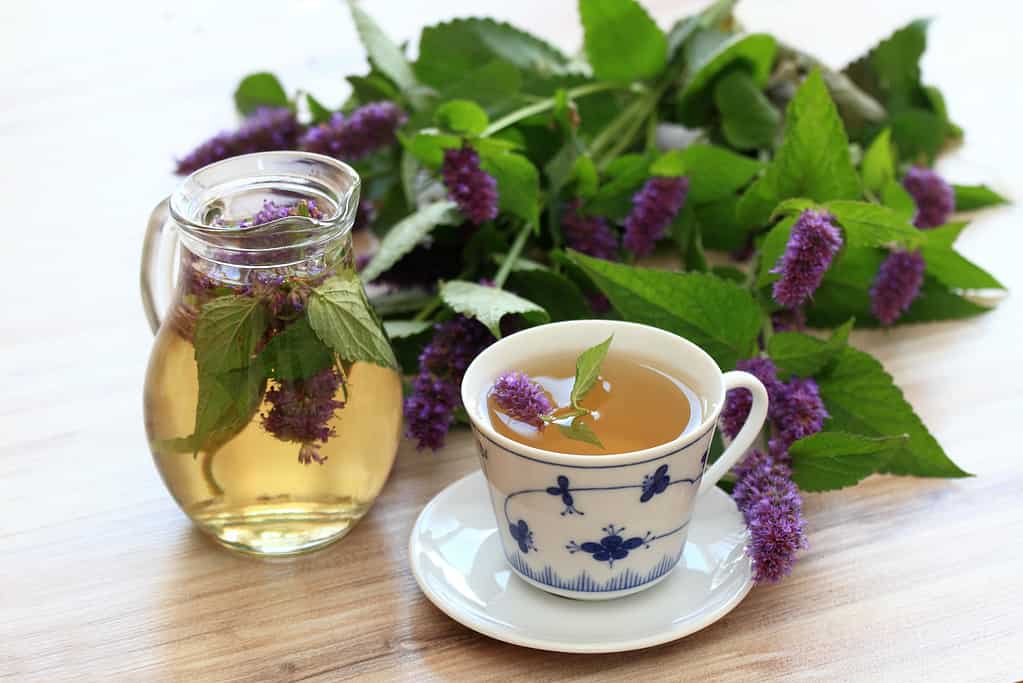
Did you know that all parts of the hummingbird plant (including flowers and leaves) are edible? They make great tea!
©svehlik/iStock via Getty Images
- Sonoran Giant Hyssop—Agastache wrightii. Grows in Sonora, New Mexico, Chihuahua, and Arizona.
- Threadleaf Giant Hyssop—Agastache rupestris. Grows in New Mexico and Arizona.
- Pringle’s Giant Hyssop—Agastache pringlei. Grows in the southwest United States and Mexico.
- Palmer’s Giant Hyssop—Agastache palmeri. Grows in Mexico.
- New Mexico Giant Hyssop—Agastache pallidiflora. Grows in New Mexico, Colorado, Arizona, and Chihuahua, Mexico.
- Pale Giant Hyssop—Agastache pallida. Grows in the southwestern United States and Northern Mexico.
- White Giant Hyssop—Agastache micrantha. Grows in Texas, New Mexico, Arizona, and Chihuahua, Mexico.
- Mexican Giant Hyssop—Agastache mexicana. Grows in Mexico
- San Luis Mountain Giant Hyssop—Agastache mearnsii. Grws in New Mexico, Sonora, and Chihuahua.
- Epling’s Giant Hyssop—Agastache eplingiana. Grows in Durango, Mexico.
- Red Hummingbird Mint—Agastache coccinea. Grows in Durango and Chihuahua Mexico.
- Texas Hummingbird Mint—Agastache cana. Grows in western Texas and New Mexico.
- Trans-Pecos Giant Hyssop. Agastache breviflora. Grows in Texas, New Mexico, Arizone, Chihuahua, and Sonora.
- Orange Hummingbird Mint—Agastache aurantiaca. Grows in Chihuahua and Durango Mexoco.
The photo featured at the top of this post is © chris-mueller/iStock via Getty Images
Thank you for reading! Have some feedback for us? Contact the AZ Animals editorial team.







